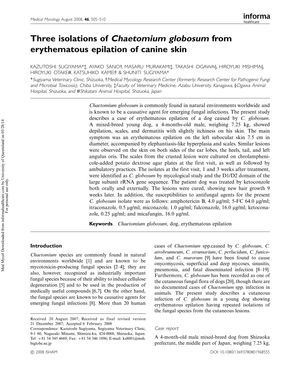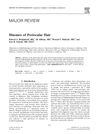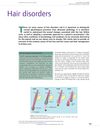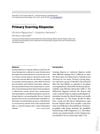Three Isolations of Chaetomium Globosum from Erythematous Epilation of Canine Skin
January 2008
in “
Medical mycology
”

TLDR A dog's skin infection caused by the fungus Chaetomium globosum was effectively treated with ketoconazole.
In 2008, a study described a case of erythematous epilation in a 4-month-old mixed-breed male dog caused by the fungus Chaetomium globosum. The dog exhibited symptoms such as depilation, scales, dermatitis, and slight itchiness, with a notable erythematous epilation on the left subocular skin. Cultures from the lesions identified C. globosum, and the dog was successfully treated with oral and external ketoconazole, resulting in hair regrowth after 9 weeks. The study also reported the susceptibility of the C. globosum isolate to various antifungal agents, with ketoconazole showing a minimum inhibitory concentration (MIC) of 0.25 µg/ml, indicating its effectiveness against this fungal infection.





